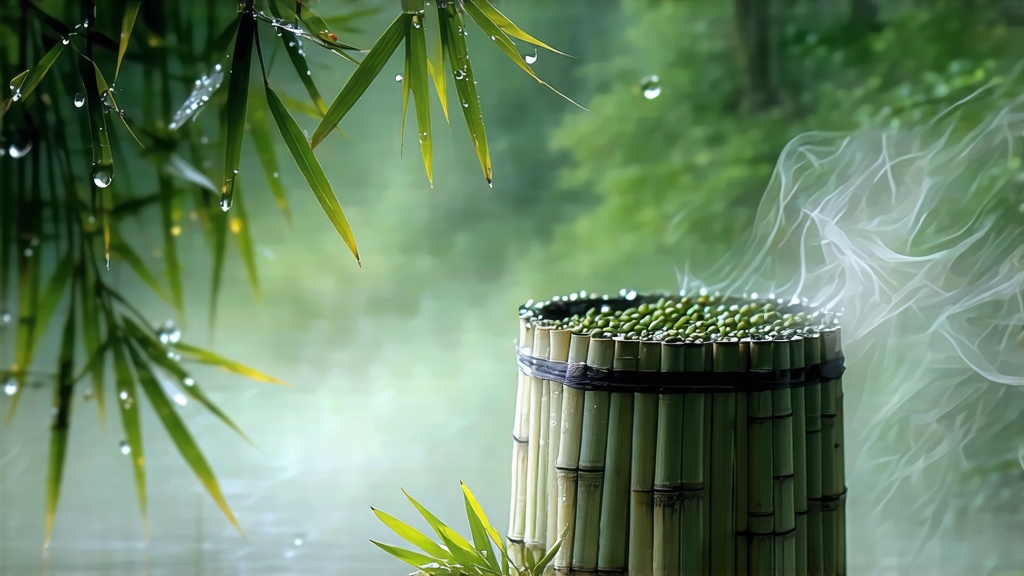
Tucked high above the Sichuan basin where perpetual cloud veils the Min River gorge, Meng Ding Huang Ya has been quietly perfecting its golden character for more than twelve centuries. International drinkers usually greet yellow tea with a polite nod of ignorance; after all, only three percent of China’s annual tea output qualifies for the colour. Yet within that slender slice Meng Ding Huang Ya (literally “Meng Peak Yellow Bud”) reigns as the earliest recorded yellow tea, predating even the celebrated Jun Shan Yin Zhen of Hunan. Its story begins in the Tang dynasty when a Buddhist monk named Gan Lu (“Sweet Dew”) transplanted wild tea seedlings onto the five summits of Meng Ding, believing the altitude would temper the leaf’s astringency and coax out natural sweetness. Imperial annals from 724 CE already list the tea as gong cha, “tribute tea”, carried 1,400 li by horseback to Chang’an so that Emperor Xuanzong could sip it while listening to newly imported Central Asian lute music. For the next seven dynasties the tea disappeared and re-entered court records whenever Sichuan’s mountain roads were passable; each revival tightened the link between leaf and throne, so that by late-Qing times the bud’s golden down was compared to the dragon-robes of the Son of Heaven himself.
What separates Meng Ding Huang Ya from green teas that share the same latitude is a master-level manoeuvre called sealed yellowing (men huang). After plucking the standard one-bud-one-leaf around the Qingming festival, artisans with 25 years’ experience spread the buds on bamboo trays for no more than 90 minutes of withering; the goal is to reduce surface moisture without waking up the oxidative enzymes. A quick sha qing (“kill-green”) follows in woks heated to 160 °C, but the firing lasts only three minutes—just long enough to fix the green colour yet preserve a stubborn 12 % internal moisture. While green-tea makers would now roll and dry, the Meng Ding craftsman instead piles the hot leaf inside a goatskin-lined wooden box, covers it with steamed cotton cloth, and walks away. For the next 48 hours the trapped residual heat and humidity trigger a non-enzymatic browning that tints the leaf edge ochre while keeping the vein green; amino acids convert into the chestnut-sweet compound sotolon, and catechins dimerise into softer theaflavins. The process is checked every four hours by sniffing the rising steam for the tell-tale scent of fresh corn silk; if the aroma tilts toward boiled spinach the lid is lifted to cool the pile, proving that yellow tea is less a recipe than a conversation with volatile chemistry. Finally the leaf is hand-rolled into hair-thin strips and dried twice—first over a bamboo-basket charcoal fire at 80 °C, then again at 60 °C while the master constantly tosses the leaf upward so that each bud lands individually, preventing any flattened “dead” spots. The result is a tea that looks like a miniature golden spear, downy at the tip, sage-green at the spine, and releasing a fragrance that oscillates between fresh pineapple and toasted sesame.
Western brewing charts often mislead by treating yellow tea like a fragile green. Meng Ding Huang Ya is actually denser in soluble solids; it begs for higher temperature yet punishes over-long infusions. The classic Gong Bei (“fair cup”) method starts with 4 g of leaf in a 150 ml porcelain gaiwan. Rinse the buds with 85 °C water for exactly five seconds to wake the aromatics, discard. First infusion: 88 °C water, 15 s, pour along the gaiwan wall to avoid scorching the down. The liquor emerges the colour of chardonnay with a faint jade rim; the aroma is orchid and custard apple, the taste a seamless slide from sweet corn to macadamia. Second infusion at 30 s deepens the colour to old gold and introduces a cool menthol note that lingers on the sides of the tongue. By the fifth infusion—still using 90 °C water but extending to 55 s—the cup turns pale honey yet retains a rock-candy sweetness, proof that the sealed yellowing has polymerised sugars into slow-release flavour molecules. A grander, more ceremonial approach is the “three-bowl” Sichuan custom: 2 g of buds per 200 ml, water at 80 °C, no lid, drunk in silent contemplation